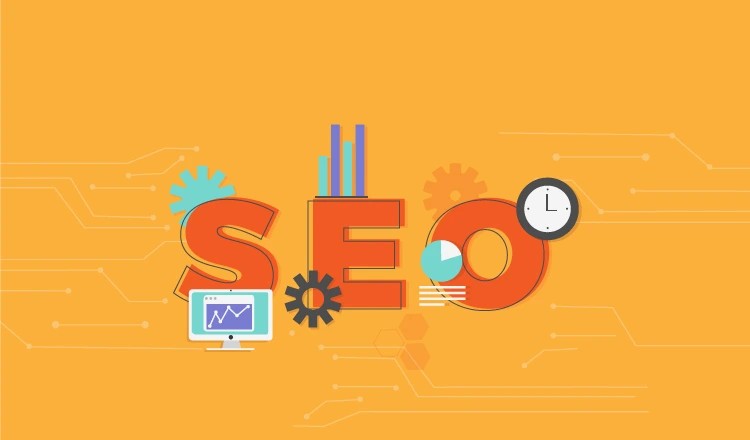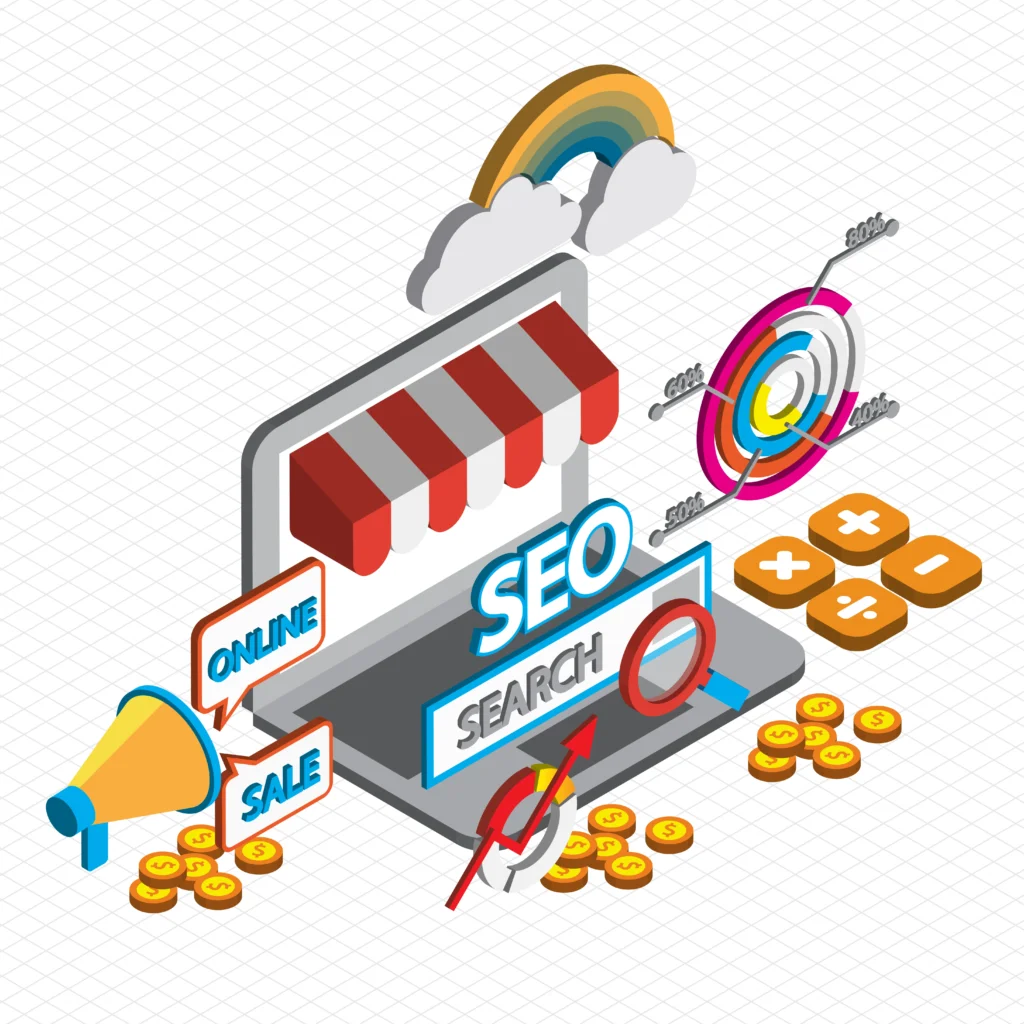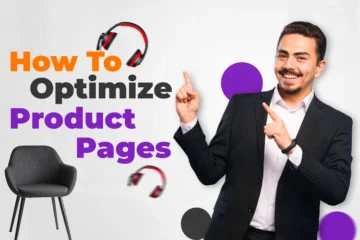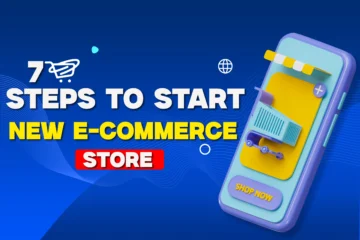Boost Your eCommerce Traffic: Smart SEO Strategies for More Sales
Top 7 SEO Tricks Growing your eCommerce business starts with one key element—traffic. The more visitors you attract, the more potential customers you gain. While digital ads are a common way to drive traffic, the rising costs of PPC make it tough to compete with big brands in keyword bidding wars.
That’s where eCommerce SEO comes in.
By optimizing your website for search engines, you can reduce dependency on paid ads, improve search rankings, and drive consistent organic traffic—all without breaking the bank. And if you invest in affordable eCommerce hosting, you’ll also improve website performance, ensuring better SEO results.
Why SEO is Important for Your Online Store
Even if you have the best products at unbeatable prices, it won’t matter if potential customers can’t find you on search engines. A beautifully designed website is useless without visibility.
This is where SEO makes all the difference. The higher you rank on Google, the more visitors you attract and the more sales you generate.
Proven SEO Tips to Skyrocket Your eCommerce Growth
If you’re ready to optimize and scale your e-commerce store, here are some expert-backed SEO strategies to help you rank higher and boost conversions.
1. Mastering Keyword Strategy for Maximum Visibility
Keywords connect your content with your audience. When potential customers search online, they use specific terms Your job is to align with their needs by optimizing your site with the right keywords.
However, more keywords don’t always mean better rankings. Instead of overloading your pages with multiple keywords, focus on a few highly relevant terms per page. This helps search engines understand your content better and ensures it appears in the most relevant searches.

How to Choose the Right Keywords
Start with What You Know
Think about what you offer and list down related terms. If you sell pet supplies, for example, you might include keywords like “dog food,” “cat toys,” or “pet grooming kits.”
Use Data-Driven Insights
Check tools like Google Analytics, Moz Keyword Explorer, or Google Search Console to find keywords that are already driving traffic to your site. Prioritizing these can help you build on existing momentum.
Understand User Intent
Not all searches mean the same thing. A user searching for “best email marketing strategies” may be looking for educational content, while someone searching “email marketing software pricing” is likely ready to buy. Choosing keywords that align with user intent can improve engagement and conversion rates.
By strategically selecting and using keywords, you make it easier for search engines to categorize your content, improving visibility and attracting the right audience.
Related: How To Optimize Product Pages For Rankings?
2. Elevate Your Product Page Experience
Top 7 SEO Tricks Once you’ve integrated keyword research into your strategy, the next step is optimizing your product pages to create an enjoyable shopping journey for customers.
You might be wondering does user experience really impact eCommerce SEO? Absolutely. Search engines, especially Google, prioritize high-quality content that offers value, and this applies to online stores just as much as any other content type.
So, what makes a product page truly engaging and user-friendly? It’s all about delivering accurate, helpful, and immersive content that enhances the shopping experience. Here’s how you can achieve that:
- Showcase High-Quality Product Images: – Offer multiple views, including different colors and sizes, so customers can see exactly what they’re getting.
- Context-Rich Visuals: Feature models or real-world scenarios that show the product in action, helping customers visualize its use.
- Comprehensive Product Descriptions: Go beyond the basics. Include details about materials, sustainability, and sourcing to build trust.
- Social Proof Matters: Highlight genuine reviews, ratings, and testimonials to reinforce credibility and encourage conversions.
When crafting product descriptions, naturally weave in relevant keywords without overloading the text. Instead of keyword stuffing, focus on engaging storytelling and detailed, valuable information. This approach not only pleases Google but also builds stronger connections with your audience.
By making your product pages informative, visually appealing, and user-friendly, you enhance both SEO performance and customer satisfaction, leading to better rankings and higher sales.

3. Leverage Metadata for Maximum SEO Impact
Metadata plays a crucial role in enhancing your website’s visibility on search engines. Every page on your site has dedicated sections within the <head> tags where you can insert metadata key information that helps search engines understand and rank your content effectively. Even if your website runs on a CMS that pre-fills metadata, regular updates and optimizations are essential for staying competitive.
Title Metadata: The SEO Powerhouse
Your title metadata is the headline that appears in search results and at the top of a browser tab. It’s one of the most influential ranking factors, making it crucial to craft compelling, keyword-rich titles. If you use a CMS, meta titles may be auto-generated from your page titles, emphasizing the importance of well-structured, relevant headings.
Description Metadata: Your Website’s First Impression
Think of your meta description as a digital storefront window it gives potential visitors a sneak peek into your content. A well-crafted description (typically two complete sentences) should be engaging, informative, and keyword-rich to attract clicks. While search engines may sometimes override it, providing a strong meta description increases your chances of capturing user attention.
Keyword Metadata: Not a Ranking Factor, But Still Useful
Although search engines no longer prioritize keyword metadata, it can still be a helpful organizational tool. Focus on using 3-7 well-researched phrases (each consisting of 1-4 words) to align your content strategy with search intent. For example, instead of generic terms, opt for specific keyword phrases like “computer science degree” to target the right audience effectively.

4. Optimize Website Navigation for Better UX & SEO
Did you know that users typically decide whether to stay or leave a website within 10-20 seconds? If your site is difficult to navigate, cluttered, or confusing, visitors will quickly move on to competitors. This makes streamlined navigation essential for both search engine optimization and user experience.
Breadcrumb Navigation: A Roadmap for Users & Search Engines
Breadcrumb navigation helps users easily understand their location within your site’s structure without needing to check the URL. This improves usability and encourages longer session durations, signaling to search engines that your site is valuable and user-friendly.
Clean URL Structure: Simple, Intuitive, & SEO-Friendly
A well-structured website isn’t just about appearance; it’s also about clean URLs. A clear, logical URL format improves user experience and helps search engines index your pages more effectively. Aim for short, descriptive URLs that are easy to read and understand, making navigation seamless for both visitors and search bots.
By refining your site’s navigation and structure, you can reduce bounce rates, improve engagement, and boost search rankings all key factors for online success.
5. Eliminate Duplicate Content for Better Rankings
Duplicate content text appearing in multiple places online confuses search engines like Google. When they can’t determine the most relevant version, your rankings suffer. To keep your online store unique and SEO-friendly
Write Original Product Descriptions – Avoid copying and pasting manufacturer or supplier descriptions. Instead, craft engaging, unique descriptions that highlight what makes your products special.
Differentiate Similar Products – Even if two products are alike, tweak their descriptions to emphasize unique features. This prevents dilution of rankings across product pages.
Fix URL Structures – Watch out for session IDs, tracking links, and pagination issues that create duplicate URLs. Tools like Yoast SEO can help with these technical optimizations.
Refine Category Organization – As your store grows, avoid duplicate categories. Use targeted, keyword-optimized category names to streamline your site structure and enhance discoverability.

6. Supercharge Your Page Speed for Higher Rankings
Google prioritizes page speed, and so should you. A slow-loading site frustrates visitors and lowers your search engine rankings. Here’s how to improve performance effectively:
Compress Images & Files – Reduce file sizes with a content management system (CMS) or an image optimization tool. Shopify and other platforms offer built-in solutions for this.
Minify CSS & JavaScript – Clean up unnecessary code and use efficient scripts to decrease page load time. The fewer bytes your site needs to load, the better.
Implement Lazy Loading – Load images, videos, and content only when users scroll to them, rather than all at once. Many eCommerce platforms support this feature or offer plugins to enable it.
By optimizing speed, you enhance user experience, reduce bounce rates, and improve search rankings. A faster site keeps visitors engaged and makes it easier for search engines to crawl and index your content.
7. Boost Your Store’s SEO with Smart Internal Linking
While securing backlinks from external sources can be challenging, there’s a powerful SEO strategy you can implement right away internal linking.
By strategically linking to your product pages, category pages, and blog posts within your website, you distribute link equity, signaling to Google which pages hold the most value. The more internal links point to a specific page, the stronger its authority in search rankings.
But internal linking isn’t just for SEO; it enhances user experience, too. Embedding product links within “Top 10” lists, “How-to” guides, and other blog content helps visitors discover new items effortlessly. This keeps them engaged longer and drives more referral traffic to your store, creating a win-win for both search engines and customers.
Conclusion
Optimizing your eCommerce store with strategic SEO techniques is the key to sustainable growth. By implementing keyword optimization, enhancing product pages, refining metadata, improving navigation, eliminating duplicate content, boosting site speed, and leveraging internal linking, you can drive consistent organic traffic, increase conversions, and outperform competitors in search rankings.
Remember, SEO isn’t a one-time task it’s an ongoing process that requires monitoring, updates, and adaptation to search engine algorithms. Stay proactive, track your performance with analytics tools, and continue refining your strategy to maintain long-term success.
Start optimizing today, and watch your eCommerce store climb the search rankings, attract more customers, and maximize sales—all without relying heavily on paid ads!



